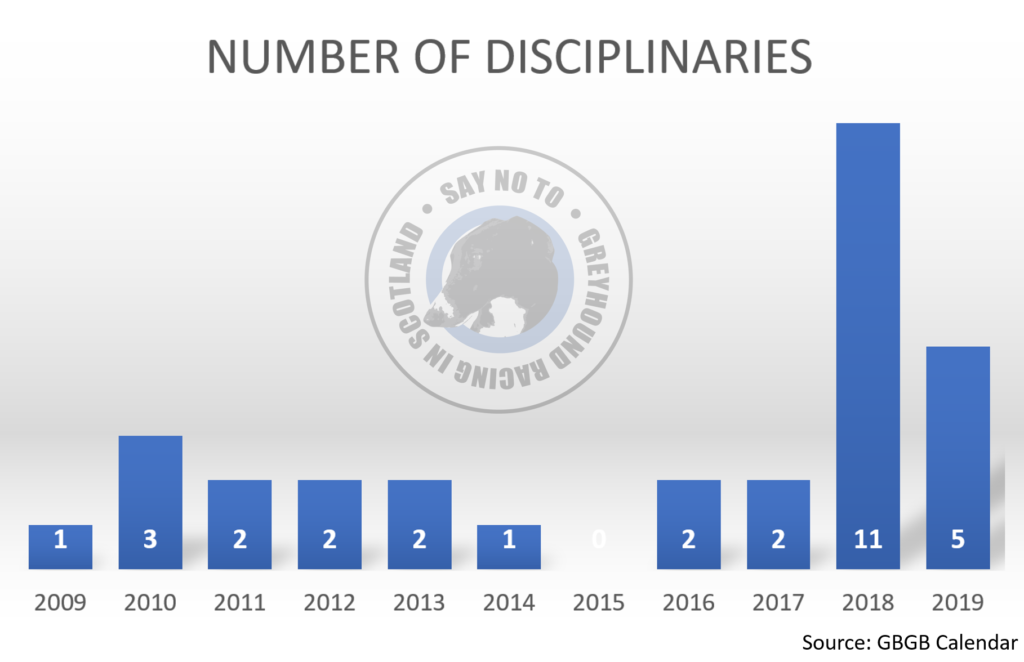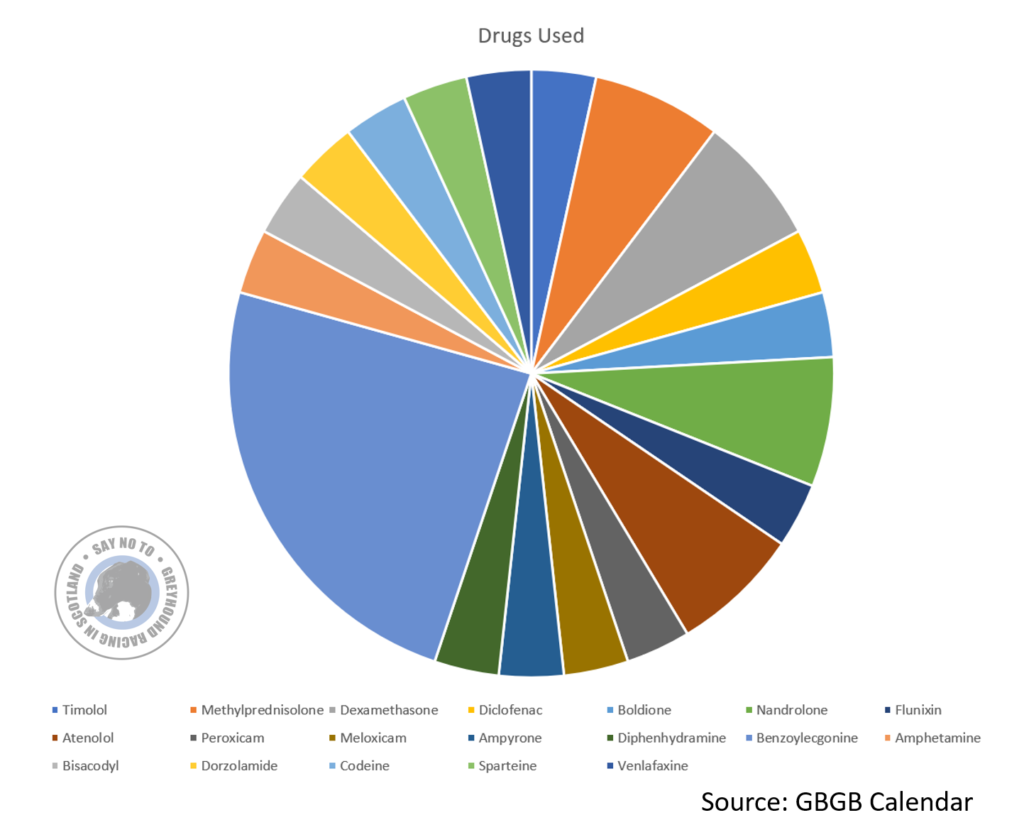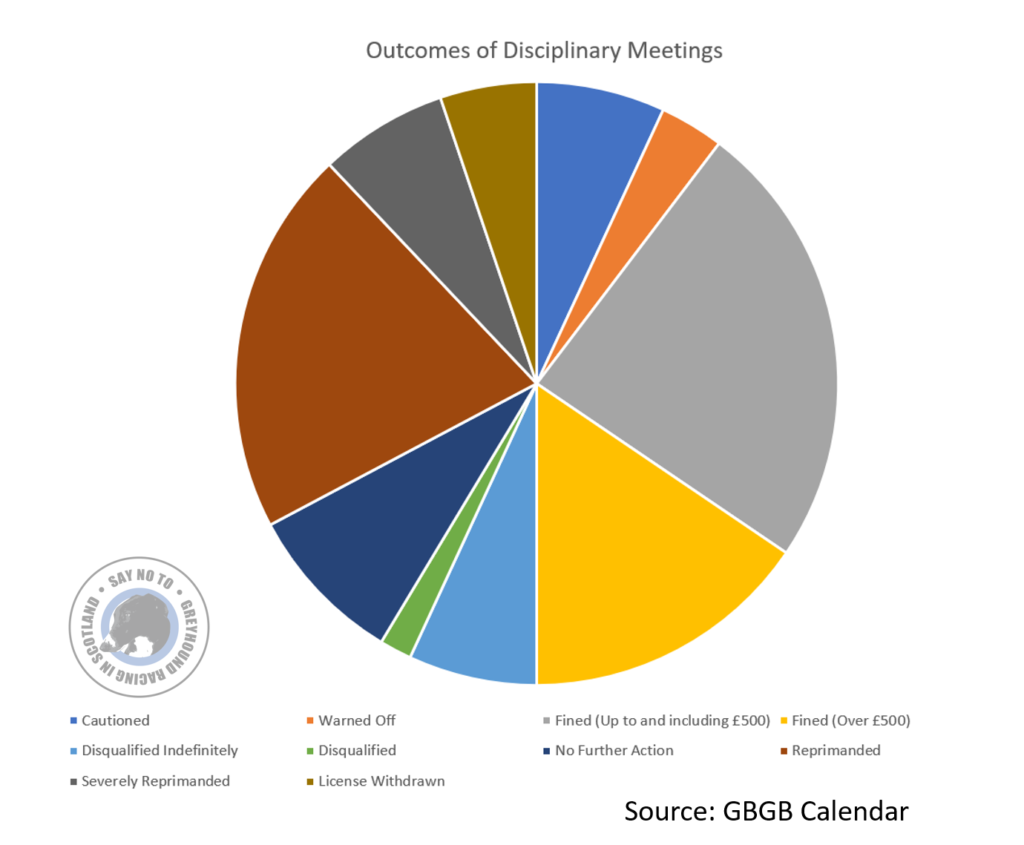There are two greyhound tracks in Scotland where racing takes place. The official Greyhound Board of Great Britain track at Shawfield in Rutherglen, Glasgow and Thornton, an independent ‘flapper’ track near Glenrothes in Fife.
In recent years there were two GBGB tracks, the other being Powderhall in Edinburgh which closed in 1995 and 7 independent flapper tracks, the last closure being Halcrow at Gretna in 2017. A new track at Wallyford, East Lothian was given planning permission in 2005 and the grandstand erected in anticipation. After a long fight lasting many years which saw the developer continually adjust the plans, planning permission lapsed in March 2020.
Animal welfare is devolved to the Scottish Parliament at Holyrood and as such, the Animal Health & Welfare (Scotland) Act 2006 protects every dog in Scotland including racing greyhounds. It also means that any decision to ban greyhound racing in Scotland will only be taken by the Scottish government.
Thankfully, greyhound racing is in decline in Scotland with both Shawfield and Thornton only holding one race meeting per week. Both tracks state there aren’t enough greyhounds left in Scotland to enable them to hold more meetings although there are several larger Scottish kennels who travel to tracks in the North East of England to race, namely Newcastle, Sunderland and Pelaw Grange.
This year, one of the largest and most notorious racing and breeding kennels, Target in Hawick, Borders, closed after two dogs tested positive for cocaine at Newcastle track in 2019. This was the culmination of two years of consistent doping by Scottish trainers.

Between 2009 and 2017 there were 15 positive tests including 13 from Shawfield but 2018/19 saw a massive increase in the numbers with 16 positives which included 13 from Shawfield.

Those 13 tests included 5 for cocaine and others for steroids, stimulants, beta blockers, analgesics and antidepressants. GBGB stated that as a result, the numbers of tests being carried out at Shawfield were increased. Drugging racing greyhounds is a clear breach of the AHW (Scotland) Act 2006 and also therefore breaks the law but incredibly, not one single prosecution has taken place despite our best efforts to make this happen.

If we take the number of ‘runs’ quoted in the injury and death statistics produced for 2018 which was 426,139 and 410,607 for 2019 and the number of samples quoted in the Greyhound Commitment as ‘more than 15,000’ for October 2017-September 2018 and ‘more than 8000’ for October 2017-September 2018, it shows the approximate percentage of dogs drug tested in the UK to be 3.52% in 2018 and 1.95% in 2019. The figures are approximate as the dates for each year are out by 3 months but this is the GBGB being fully transparent! We know the GBGB have not reported one single doping offence to the Procurator as they told us they did at a meeting of the Cross Party Group on Animal Welfare at the Scottish Parliament.
On 2nd September 2019 a routine inspection by the Stipendiary Steward of a kennel run by a trainer named Chris Sillars, found a black greyhound by the name of Dudleys Forever in a condition described by the Steward as ‘the worst condition of a greyhound I have seen.’ In his opinion it was a matter of animal cruelty. Dudleys Forever was taken to a veterinary surgeon where she was found to weigh 16.3kg with a body score condition of 1/5 and sadly euthanised. The Disciplinary Committee found this to be a breach of the AHW (Scotland) Act and urged the GBGB to send the details of the case to the Crown Office & Procurator Fiscal Service in Edinburgh. We ourselves reported Dudleys Forever’s case to Police Scotland and the SSPCA. No prosecution has taken place to date.
As a group, we are Associate Members of the Cross Party Group for Animal Welfare at Holyrood and in October 2018 we presented to the Group our reasons why greyhound racing should be banned in Scotland. The GBGB were invited to reply and attended in April 2019. Their presentation consisted of a PR exercise for the Greyhound Commitment which we maintain is unachievable. Two promises were made in front of MSPs that night by Mark Bird, Director, and Simon Gower, Chief Veterinary Officer, the first being that the ‘Injury not treated on economic grounds’ tick box would be removed from the Retirement Form for GBGB Registered Greyhounds. Secondly that the GBGB Rules of Racing would be amended to include the Animal Health & Welfare (Scotland) Act 2006 in Rule 2. Unsurprisingly, neither of these promises have been fulfilled and so we still have the ludicrous situation where dogs at Shawfield are running under English welfare regulations according to the GBGB. We will also continue to press for injury and death statistics to be produced independently for Scotland as we believe this is right under devolved animal welfare.




